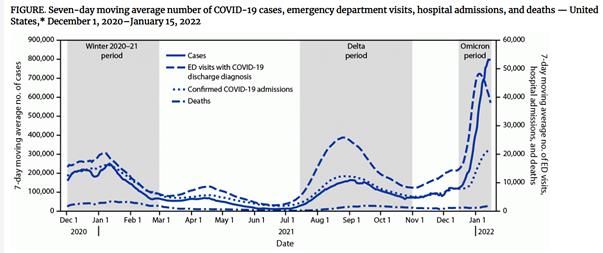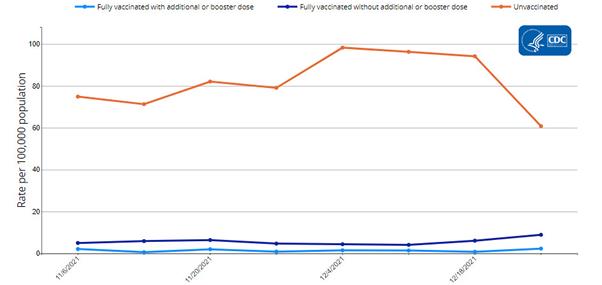Commentators on public health are expressing a mildly optimistic note concerning progress in controlling COVID. Dr. Antony Fauci, Director of the National Institute of Allergy and Infectious Diseases and Chief Medical Advisor to the White House, noted that cases have peaked and are sharply declining in some parts of the Northeast and upper Midwest although the Omicron variant of COVID is persisting in southern and western states. He commented “Things are looking good. We don’t want to get over confident, but they look like they’re going in the right direction now.” In an interview with ABC he stated “There may be a bit more pain and suffering with hospitalizations in those areas of the Nation that have been vaccinated or have not received boosters.”
 |
Former FDA Commissioner, Dr. Scott Gottlieb, predicted that many office workers would return during February. He stated on a recent CBS Face the Nation interview, “You are seeing a lot of businesses make decisions to return to work on March 1st because I think they want to give themselves a cushion, especially having been surprised before.”
The CDC projected that COVID-19 hospital admissions will remain stable over the next four weeks with a current 7-day hospital average for mid-January at 20,990 up one percent from the previous weekly average.
Dr. John Swartzberg at the University of California Berkeley School of Public Health, stated “COVID cases may decline from March through spring or summer and I think May or June is going to really look up for us. I am quite optimistic.” He added, “Generally speaking, the level of immunity in our population is going to be much higher than it was going into the Omicron pandemic and that’s going to help us not only with Omicron and Delta, if they’re still circulating, but it will also help us with any new variant.”
 |
Notwithstanding mildly optimistic projections, the U.S. food system continues to function under strain. This is due to absenteeism at all levels, including in production, processing, transport, distribution and retail. Despite a reduction in congestion at West-coast ports, disruption in supply chains is still apparent for food especially produce, some branded items and meats. Transport delays have impacted distribution of fresh produce, meat, poultry and seafood. Some supermarket chains have run short on specific items and consumers are learning to buy products when available and to switch brands depending on shelf stocking. Trends in reduced slaughter of cattle, hogs, and to a lesser extent chicken through mid-January, attributed in part to labor shortages will be reflected in lower availability through February given the inherent lag in the distribution chain.
As of January 28th 64 percent of the U.S population had received two doses of an mRNA vaccine and 41 percent were fully vaccinated. A total of 169,000 new cases were diagnosed on January 28th but the 7-day rolling average is down by 34 percent. Unfortunately deaths due to COVID are up 29 percent over 14-days with a tally of 1,050 recorded on January 28th. Hospitalizations, ICU admissions and deaths from COVID are in the overwhelming proportion among the unvaccinated.